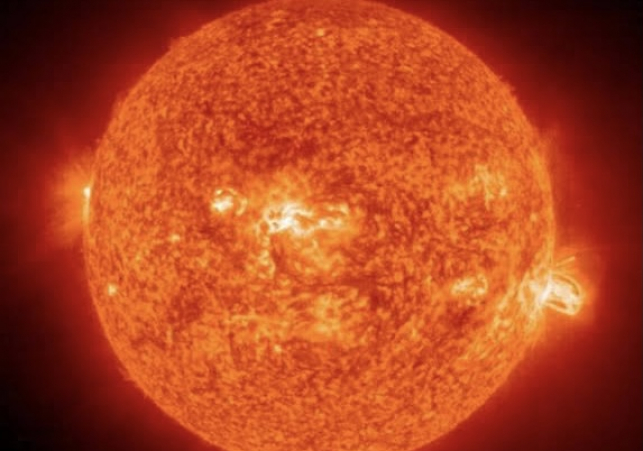

On Thursday, the Sun produced a massive solar flare that impacted the top of the Earth's atmosphere, resulting in a shortwave radio blackout in the Indian Ocean. For a while, aviators and mariners' radio communications may have been disrupted by the blackout. Minor geomagnetic storms are likely to affect the Earth in the next days due to storm clouds.
A solar flare is a powerful burst of radiation caused by the explosive release of magnetic energy associated with sunspots. Radiation includes radio waves, X-rays, and gamma rays is emitted by the explosion, which travels the length and breadth of the universe, rushing towards worlds like Earth. The very energetic charged particles are released from the Sun at speeds close to the speed of light during a solar flare. According to Nasa, these rays can disrupt the Earth's ionosphere, which plays a crucial role in radio communications.
"Sunspot AR2929 erupted on January 20th, creating a massive M5.5-class solar flare," according to spaceweather.com. The strong ultraviolet flash was captured by NASA's Solar Dynamics Observatory. A surge of X-rays ionised the top of Earth's atmosphere during the flare, resulting in a shortwave radio blackout around the Indian Ocean. At frequencies below 30 MHz, aviators, seafarers, and ham radio operators in the area may have noted strange propagation effects."
"Newly arrived photos from the Solar and Heliospheric Observatory (an European satellite) reveal that the explosion also caused a coronal mass ejection," the space weather website reported (CME). The forming cloud is barely outside the'strike zone' of the Earth. Although a glancing blow on January 23-24 has not been ruled out, it is projected to miss our planet."
The solar flare, on the other hand, hastened the arrival of a blizzard of energetic particles on Earth. The radiation storm was not as bad as it could have been. No satellites were injured in the process. The planet's magnetic field, on the other hand, funnelled many of the particles into Earth's polar regions, generating a persistent shortwave radio blackout around the Arctic and (particularly) Antarctic circles, according to the report.
On the other side, the solar flare accelerated the arrival of a blizzard of energetic particles on Earth. The radiation storm did not turn out to be as severe as it may have been. There were no satellites hurt in the process. According to the research, the planet's magnetic field funnelled many of the particles into Earth's polar regions, resulting in a permanent shortwave radio blackout around the Arctic and (especially) Antarctic circles.
As a series of coronal mass ejections (CMEs) send glancing blows to Earth's magnetic field, geomagnetic instability is now possible from January 22 to 24. M-class flares from outgoing sunspot AR2929 flung two of the CMEs into space, while a third CME recently departed sunspot AR2933, according to the space weather website.
The website warned that while none of the storm clouds will make a direct hit, their combined effect could cause mild G1-class geomagnetic storms.
A significant radio blackout occurred in specific places of the Atlantic Ocean on July 3, according to the US National Oceanic and Atmospheric Administration's Space Weather Prediction Center.